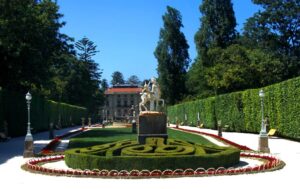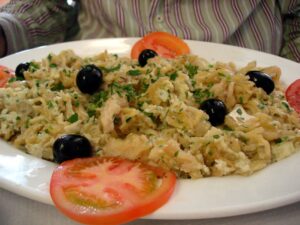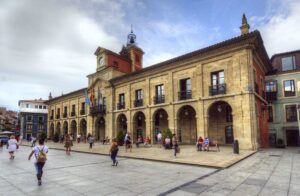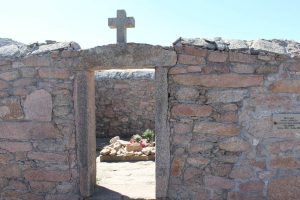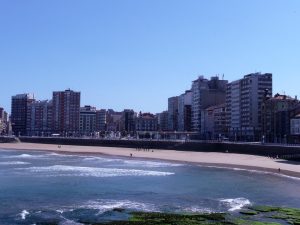
Would you like to uncover the secrets hidden in a small village in Galicia? Cea, a place seemingly frozen in time, invites travellers to explore its rich history, vast culture, and unique culinary traditions.
But, what to see in Cea? In this guide, we will highlight the most important landmarks in the area and why it is a must-see destination on the Camino de Santiago, particularly along the Vía de la Plata route.
Índice de contenidos
Why take the Vía de la Plata?
Before discussing Cea, we’d like to give you a few reasons why you should choose the Vía de la Plata for your pilgrimage along the Camino de Santiago. This route is the longest of all Camino de Santiago routes, stretching approximately 960 kilometres from Seville to Santiago de Compostela.
For a better Camino de Santiago experience, we present the reasons to choose this route, along with a comparison to other popular options.
Varied landscapes and rich cultural heritage
The Vía de la Plata passes through four autonomous communities: Andalusia, Extremadura, Castile and León, and Galicia. This journey will allow you to experience a wide variety of landscapes, from the Andalusian dehesas to the mountains of Galicia, passing through historic cities like Mérida, Cáceres, Salamanca, and Zamora.
Each region offers a unique cultural richness, with UNESCO World Heritage monuments and a diverse gastronomy that enriches the pilgrim’s experience.
Less crowded than other routes
Unlike the French Way, the Vía de la Plata is less crowded, offering a more intimate and peaceful experience. This reduced foot traffic allows for a deeper connection with nature and facilitates personal reflection, aspects many pilgrims appreciate during their spiritual journey.
Physical challenge and preparation
The length and stages of the Vía de la Plata represent a significant physical challenge. It is recommended to be in good physical shape to tackle the stages, which range from 16 to 38 kilometres. This challenge can be appealing to those seeking a more demanding and rewarding experience.
Comparison with other routes
- The French Way is renowned for its mountainous landscapes and historical significance. However, it tends to be more crowded, and the stages are shorter compared to the Vía de la Plata. For a shorter experience, we recommend the route from O Cebreiro to Santiago.
- The various stages of the English Way add up to approximately 120 kilometres from Ferrol or 75 kilometres from A Coruña, making it one of the shortest routes. It’s ideal for those with less time, but it doesn’t offer the same variety of landscapes or cultural richness as the Vía de la Plata.
- The stages of the Primitive Way, 321 kilometres from Oviedo to Santiago, are known for their difficulty due to the mountainous terrain, but also for their stunning landscapes. While offering a more solitary experience, it doesn’t match the length or cultural variety of the Vía de la Plata.
- Finisterre and Muxía: the key difference with this route is that it is an extension of the Camino de Santiago, leading pilgrims to the Atlantic coast. While the stages from Santiago to Muxía offer unique coastal views, it is a shorter route with less diversity in landscapes and culture.
The Bread of Cea: A Galician Tradition Full of Flavour
The bread of Cea is a true gastronomic treasure, recognised throughout Galicia and even in Spain. Its history dates back centuries, when the inhabitants of this region began making it using traditional techniques.
The bread is characterised by its crispy crust and fluffy crumb, the result of using exclusively Galician wheat and pure water.
The process of making this bread is meticulous. Simple but high-quality ingredients are used: flour, water, salt, and natural yeast. It is kneaded by hand and left to ferment for several hours to develop its distinctive flavour. It is then baked in wood-fired ovens, which give it an unmistakable aroma and unique taste.
It accompanies local meals and has become a cultural symbol for the people of Cea. The tradition of the bread of Cea has been passed down through generations, becoming an essential part of festivals and local celebrations. Visitors can find this delicacy in local bakeries and enjoy it with typical Galician dishes.
An Iconic Symbol: The Clock Tower

The Clock Tower is one of the most iconic symbols of the town. This historic monument stands as a testament to the town’s medieval past. It was built in the 18th century and features distinctive baroque elements that draw the attention of both locals and tourists.
In addition to its timekeeping function, it holds deep cultural significance for the local community. It has witnessed numerous historical and social events over the years. Important festivals are held nearby, such as the patron saint celebration in honour of Saint Christopher. During these events, locals gather to pay tribute to their patron saint.
The Parish Church: A Historical and Religious Landmark
The parish church is a prominent point of interest in this Galician village. Dedicated to the Virgin of the Rosary and Saint Christopher, its current construction dates back to the 16th century, though it replaced an older temple of greater antiquity.
The church features a blend of architectural styles, mainly Gothic and Baroque, reflecting its evolution over the centuries. Inside, visitors can admire beautiful sculptures and frescoes depicting biblical scenes and saints venerated by the community.
This church serves as a place of worship and a symbol of Cea’s cultural identity. Its strategic location makes it a key meeting point for pilgrims travelling the Camino de Santiago.
Monastery of Oseira: A Galician Spiritual Treasure

The Monastery of Oseira is a major tourist and cultural attraction. Founded in the 12th century by Cistercian monks, it is known as the “Galician Escorial” due to its imposing architecture. Its church is a masterpiece of Romanesque style, featuring pointed arches and an elegant design.
The monastery has three cloisters, each with its own unique features, and a 15th-century chapter hall that impresses with its beauty. Over the years, it has undergone restoration work to preserve its original splendour.
Today, guided tours are available, allowing pilgrims to discover its rich history and religious art. The monastery also houses a museum with a collection of historical artefacts.
Explore the Natural Attractions
Cea is renowned for its stunning natural surroundings, which invite exploration. The region is dotted with lush forests and rugged mountains, creating a diverse and appealing landscape for nature lovers.
Visitors can enjoy panoramic views from various elevated points, offering a unique perspective of the Galician landscape. Additionally, the area features rivers and lagoons that add to its natural beauty. All of this creates ideal spaces for relaxation and contemplation.
The native flora and fauna are abundant, allowing hikers to observe various species in their natural habitat.
The best time to visit Cea is during spring and autumn, when the weather is milder and more pleasant. Be sure to equip yourself with comfortable footwear and enough water to fully enjoy the outdoor activities in this idyllic setting.

